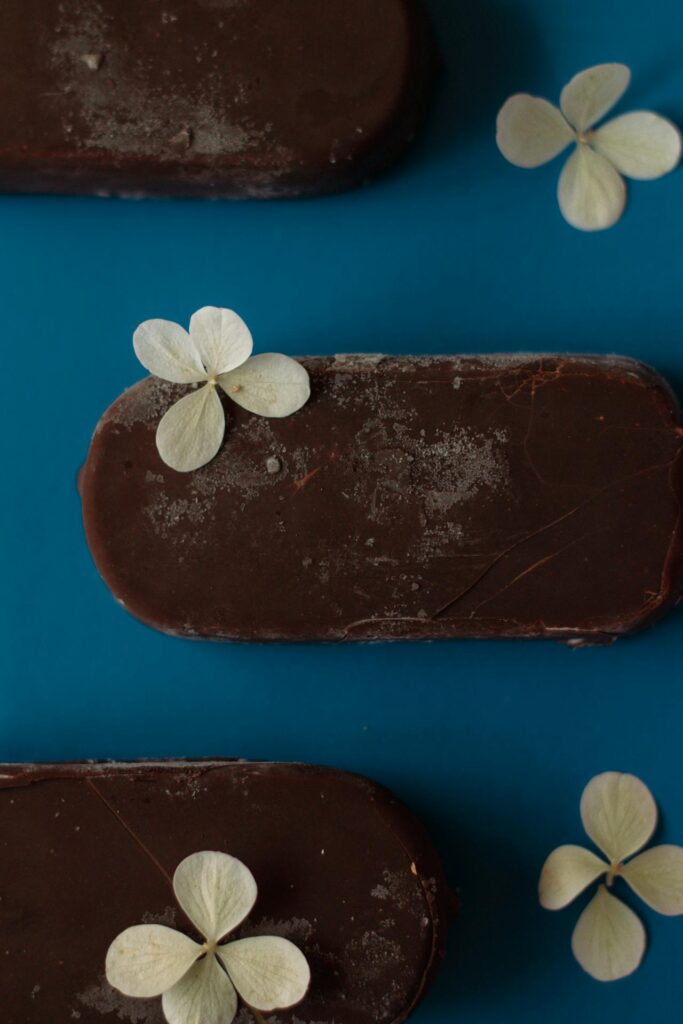My visit to Ghana a few years ago gave me a first-hand encounter with cocoa, the seed that becomes what so many love today as chocolate. I watched farmers split open the thick pods, their hands practiced from generations of labor, and saw the seeds ferment and dry beneath the African sun. To stand there was to see life behind a taste so common on our tongues yet so hidden from our eyes. That experience gave me a deep appreciation for the process and an early understanding of chocolate’s benefits. Only later did I come to learn of its darker truths, of hidden contaminants and industrial shortcuts that complicate this bittersweet delicacy. Chocolate, I would discover, is both a gift and a warning, and its story is as layered as its taste.
The origins of cacao are not in Africa, despite its dominance there today, but in the rainforests of Central and South America. The Olmecs first cultivated it nearly four thousand years ago. The Maya frothed it into ritual drinks spiced with chili, while the Aztecs valued it so highly that cacao beans became currency. When the Spanish carried it to Europe in the sixteenth century, sugar and cinnamon softened its bitterness, transforming it into a drink for kings and queens. By the 1800s, European colonial powers transplanted cacao to West Africa, where the climate and soil were ideal. Today, Ghana and Côte d’Ivoire together produce more than sixty percent of the world’s cocoa, though the tree itself was born across the Atlantic.
Just as its history spans worlds, chocolate itself carries both sweetness and bitterness. Modern science has confirmed many of its virtues. A 2012 study published in the British Medical Journal found that individuals who consumed moderate amounts of dark chocolate had a 37% lower risk of cardiovascular events compared to those who did not. Researchers at the Harvard T.H. Chan School of Public Health have noted that flavanols in cocoa improve blood flow, reduce blood pressure and help alleviate inflammation. Neurological studies suggest its antioxidants may protect against memory decline, while a 2018 Italian cohort study linked moderate chocolate intake to better insulin sensitivity. Chocolate, taken with balance, can truly act as medicine.
Yet within that same bean lies a shadow. In 2022, Consumer Reports tested 28 dark chocolate bars and found that many contained lead and cadmium above California’s Prop 65 safety thresholds. CBS News reported that nearly half of the bars tested exceeded safe lead limits, and over a third carried unsafe cadmium levels. These metals enter differently: cadmium is absorbed from the soil as trees age, while lead often settles on beans later during drying and handling. Both are invisible in taste, but both are dangerous. Cadmium builds up in the kidneys and weakens bones, while lead attacks the brain and nervous system, especially in children. There is no safe level of lead exposure, and even small daily doses over time can damage health.

Still, there are ways to enjoy chocolate wisely. Some brands are beginning to publish their heavy metal test results, offering consumers transparency. Bars with 60 to 70% cocoa content often prove safer than ultra-dark versions with 90 to 100% cocoa. Taza, Beyond Good, and Mast are examples of smaller bean-to-bar makers that have scored better in independent tests, while even some larger brands like Ghirardelli’s Intense Dark line have shown comparatively lower levels. Organic labels alone are not protection: some tested higher in metals than conventional brands, so transparency and published results matter more than marketing. The practical solution is moderation, favoring mid-range cocoa, and supporting companies that show their data rather than hide it.
Over time, researchers studying cocoa-growing regions have noted that the soil and air are not what they were fifty years ago. One striking observation that stayed with me was simple: “We grow with what the earth gives us, but the earth itself has been changed.” That truth reminds us that chocolate is more than a taste on the tongue; it is a mirror of our environment, our industry, and our choices.
Hippocrates once advised that food should be our medicine, but he also warned that medicine without balance can become poison.
To eat dark chocolate wisely is to honor its sacred history, appreciate its healing compounds, and demand safety from those who profit by it. The secret is not to abandon it, but to awaken to it, choosing carefully, eating moderately, and insisting that what is sweet on the tongue is not bitter in its cost. Chocolate remains, as always, bittersweet: healer and hazard, indulgence and warning, gift and responsibility.